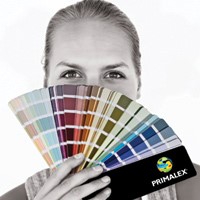Biological attacks - Mould and Fungi.
Fungi
These non-photosynthetic organisms obtain their nutrients from different sources, including wood. Their dependence on other organic matter turns them into a major threat for the natural appearance of wood. Their structure is so small that it is not visible to the eye. It develops inside the wood and sometimes on its surface. Different types of fungi attack the wood externally and internally with different degrees of aggressiveness. The most common type of fungal decay is rotting. The reason is extremely high moisture = 20-30%.
Brown Rot
Is the most common sort. The wood turns darker and cracks, forming a squared pattern. Often a white membrane is seen stretching from the attacked area towards the humid soil. Affected areas must be replaced with new wood, because their mechanical resistance is severely reduced. In general, indirect sources of humidity must also be removed.
White Rot
In addition to feeding itself with cellulose, this fungus can - to a certain extent - degrade the lignin. Therefore, the wood becomes lighter in colour and softer in appearance. This sort is found in very humid and dark areas. As in the previous case, it is eliminated by replacing affected areas with new, treated wood.
Soft Rot
This type of fungus develops inside the cell membrane, slowly and invisibly attacking the wood’s mechanical resistance. To find out if the wood is being attacked by this fungus, insert a screwdriver in the suspected area: if it leaves a trace easily, replace the affected part with a new one.
Mould & Bacteria
Mould is an imperfect fungus that does not form a fruit body. The structure can develop on the wood surface, with a whitish to grey mycelium becoming visible. They form colour-stains on wood. Depending on the type of mould, stains will be green, grey or black. They are found in humid wood and do not cause mechanical alterations. Mould can be removed by brushing or washing. Keeping wood away from excessively humid areas is a good preventive measure. There is a wide range of bacteria and mould, which are caused by excessive moisture. The microbes damage the membrane of the cell nucleus in the wood. Lignivorous bacteria cause irreversible damage, as they crack and soften the wood until its complete decay or decomposition.
Blue Stain & Fungi
This type of fungus develops in newly cut wood. Its inward colour structure makes the wood look blue along its grain. It has little effect on the wood’s physical properties, but it increases wood permeability. In the case of a very severe attack, the wood’s mechanical properties are altered. This type of fungus requires 30% humidity in the wood. Therefore, once the wood is in use, it becomes too dry for it. Even if the wood became humid again, the blueing fungi could not develop due to lack of nutrients. Some fungi are very destructive, eating the cellulose in the wood. Others cause irreversible discolouration (blue stain), but do not affect the quality of wood.
Biological attacks – Insects
Insects
Wood’s natural enemies of animal origin are wood destroying insects, which, as indicated by their name, feed on wood. Wood destroying insects lay their eggs in cracks in the wood. Their larvae feed on wood, altering its appearance and mechanical properties. They develop their life partly or fully in the natural biological environment of wood, seriously affecting its basic qualities and characteristics. This group includes two types of insects: larval insects and social insects.
Larva Insects
These are insects that go through different stages in their life cycle. Their metamorphosis undergoes four stages: egg, larva, nymph and adult. The larva phase is the longest, and it is in this phase that insects degrade wood to satisfy their need for nutrients. Their growth and the wood’s degradation are two sides of a single phenomenon. Larvae can make typical, audible sounds while eating. Two families of wood destroying insects pose the greatest risk for construction wood:
- Anobiidae or Woodworms
These insects typically attack only the sapwood of certain species of coniferous and non-coniferous woods. They also damage both outdoor and indoor structural and carpentry wood.
- Lyctids or Moths
These insects attack non-coniferous woods with high starch content, mainly targeting parquet floors and constructions platforms.
- Social Insects
Termites are the main example of this type. The most dangerous one is Reticulitermes Lucifungus Rosse or underground white ant. The main nest is always underground and outside the building. The insects enter houses through humid wall corners or through wooden beams and door frames. Wood damage is not visible, because they leave the outer 1-2 mm layer intact. Unlike larval insects, termites do no not make any noise while eating the wood. Termites live in organized colonies, where they can be divided into three categories:
- Reproducers, workers and soldiers


